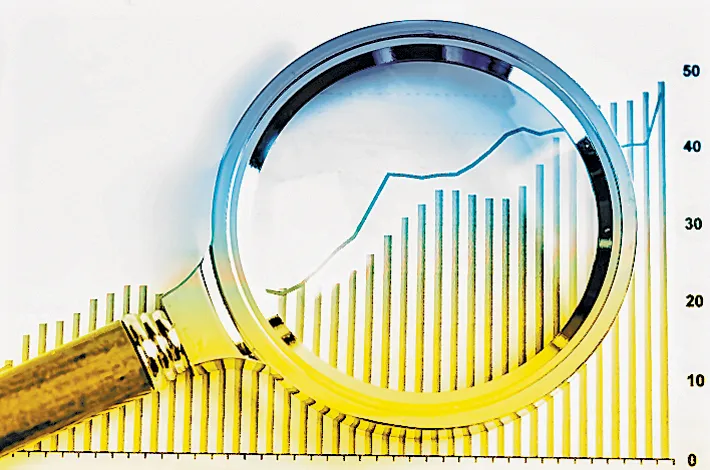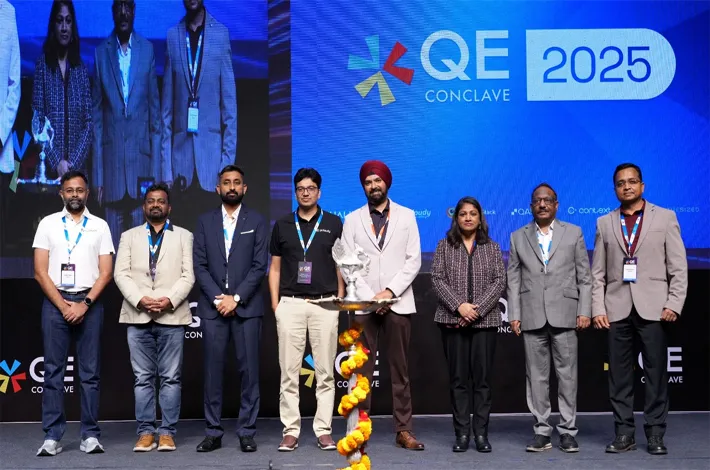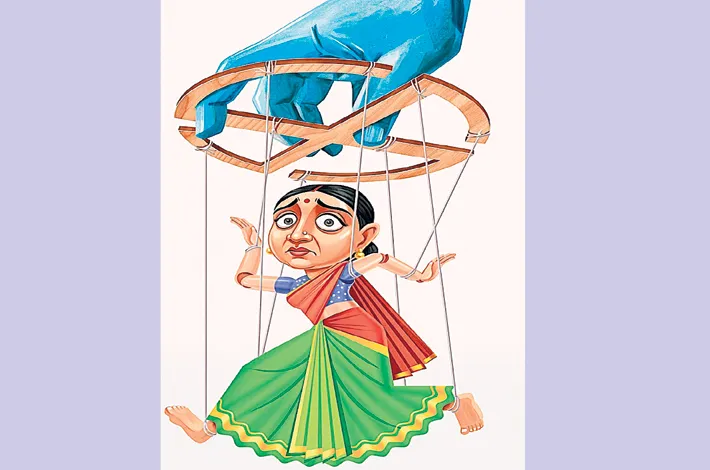Economy defies global headwinds, accelerating to a robust 8.2% growth
29-11-2025 12:00:00 AM

Palazhi Ashok Kumar mumbai
India’s economic engine gathered impressive pace in the September quarter, with GDP surging 8.2%—the fastest expansion in six quarters—underscoring the country’s resilient momentum amid global headwinds.
The robust performance was lifted by buoyant consumer demand, a resurgent manufacturing sector, and sustained strength across key service industries. Government data released on Friday estimates real GDP in Q2 FY26 at Rs 48.63 lakh crore, up from Rs 44.94 lakh crore a year earlier. Nominal GDP rose 8.7% to Rs 85.25 lakh crore, affirming India’s continued march as one of the world’s fastest-growing major economies.
Manufacturing—long viewed as a cornerstone for future growth—delivered a remarkable 9.1% expansion, a sharp rebound from 2.2% in the same quarter last year. Private consumption, which reflects household spending sentiment, grew 7.9%, improving from 6.4% in Q2 FY25 and signalling confidence among India’s burgeoning consumer base. Real GVA rose 8.1% to Rs 44.77 lakh crore, while nominal GVA climbed 8.7% to Rs 77.69 lakh crore, reflecting broad-based sectoral strength.
The secondary sector flourished, with manufacturing and construction collectively recording growth above 7%. The services sector continued to shine, with financial, real estate and professional services expanding a robust 10.2%. Agriculture and allied activities reported a moderate 3.5% rise, while electricity, gas and utility services grew 4.4%, both maintaining stability despite external uncertainties.
For the first half of FY26, India’s growth story remained firmly intact. Real GDP for April–September stood at Rs 96.52 lakh crore, registering an 8% rise compared with 6.1% a year ago. Nominal GDP grew 8.8% to Rs 171.30 lakh crore, with real GVA up 7.9% and nominal GVA up 8.8%. The IMF, in its latest assessment, lauded India’s reform momentum and called for continued structural improvements to fortify long-term growth prospects.
It emphasised sustained public investment, deeper human capital development, higher female labour participation and further easing of business conditions to unlock the next phase of India’s economic ascent. With both domestic demand and industrial activity firing in unison, India’s economy enters the second half of the fiscal year on a position of pronounced strength—reinforcing its status as a standout performer in an uncertain global environment. India’s financial system is undergoing rapid shifts with growing influence of technology, alternative business models and market-based intermediation.








